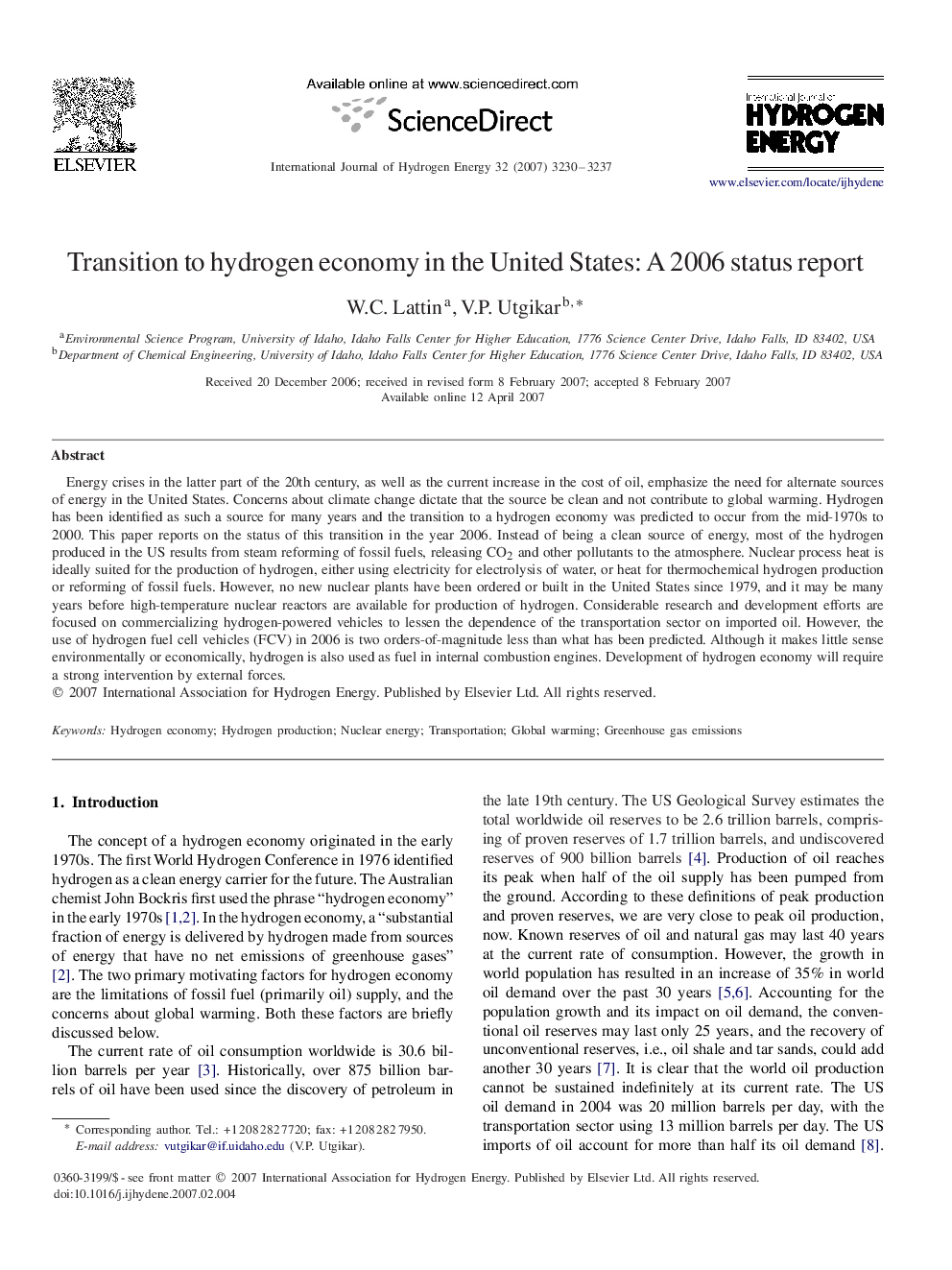| Article ID | Journal | Published Year | Pages | File Type |
|---|---|---|---|---|
| 1279661 | International Journal of Hydrogen Energy | 2007 | 8 Pages |
Energy crises in the latter part of the 20th century, as well as the current increase in the cost of oil, emphasize the need for alternate sources of energy in the United States. Concerns about climate change dictate that the source be clean and not contribute to global warming. Hydrogen has been identified as such a source for many years and the transition to a hydrogen economy was predicted to occur from the mid-1970s to 2000. This paper reports on the status of this transition in the year 2006. Instead of being a clean source of energy, most of the hydrogen produced in the US results from steam reforming of fossil fuels, releasing CO2CO2 and other pollutants to the atmosphere. Nuclear process heat is ideally suited for the production of hydrogen, either using electricity for electrolysis of water, or heat for thermochemical hydrogen production or reforming of fossil fuels. However, no new nuclear plants have been ordered or built in the United States since 1979, and it may be many years before high-temperature nuclear reactors are available for production of hydrogen. Considerable research and development efforts are focused on commercializing hydrogen-powered vehicles to lessen the dependence of the transportation sector on imported oil. However, the use of hydrogen fuel cell vehicles (FCV) in 2006 is two orders-of-magnitude less than what has been predicted. Although it makes little sense environmentally or economically, hydrogen is also used as fuel in internal combustion engines. Development of hydrogen economy will require a strong intervention by external forces.
